Address
304 North Cardinal
St. Dorchester Center, MA 02124
Work Hours
Monday to Friday: 7AM - 7PM
Weekend: 10AM - 5PM
Address
304 North Cardinal
St. Dorchester Center, MA 02124
Work Hours
Monday to Friday: 7AM - 7PM
Weekend: 10AM - 5PM
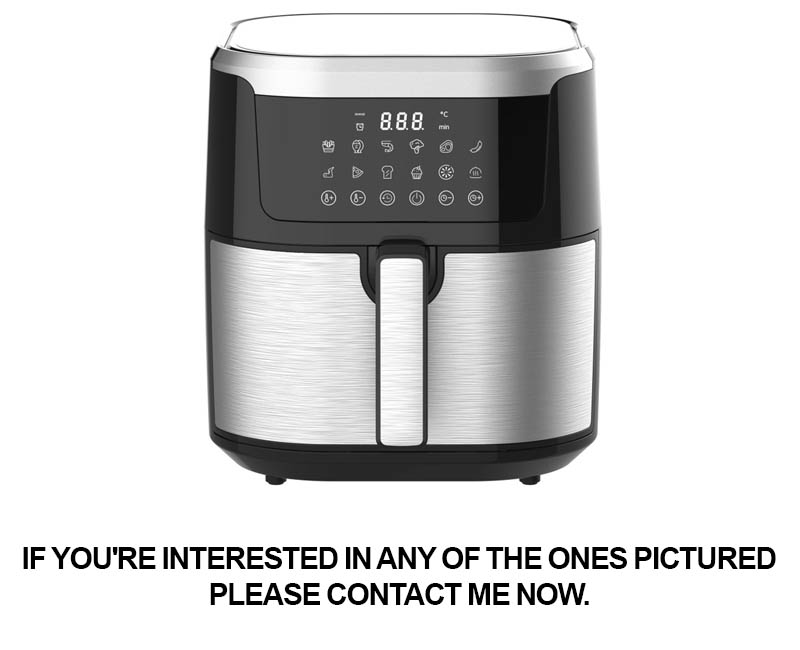
In the ever-evolving landscape of kitchen appliances, the air fryer has emerged as a game-changer, offering a healthier alternative to traditional frying methods. As consumers seek more personalized and efficient cooking solutions, the demand for custom air fryer accessories has surged. This article delves into the intricacies of designing and implementing these innovative accessories, showcasing successful case studies and offering a glimpse into the future of kitchen appliances.
The kitchen has long been a hub of innovation, and with the rise of health-conscious cooking trends, air fryers have surged in popularity. However, the demand for not just any air fryer, but a perfectly tailored one, has given rise to a new wave of customization in kitchen appliances. Enter the era of custom air fryer accessory design services, which is revolutionizing how we think about our kitchen gadgets.
As the name suggests, these services go beyond the standard offerings found on store shelves. They involve a collaborative process where customers’ unique needs and preferences are taken into account to create air fryers and their accessories that are as individual as the cooks themselves. This personalized approach has sparked a wave of creativity and functionality in the kitchen appliance market.
The concept of custom air fryer accessory design services is rooted in the understanding that every kitchen is different. Whether it’s a bustling home kitchen, a compact apartment space, or a professional chef’s kitchen, the needs for an air fryer and its accessories can vary greatly. This is where these services shine, offering solutions that cater to a wide range of users and cooking styles.
One of the key benefits of these custom services is the ability to choose accessories that are not only functional but also aesthetically pleasing. From sleek and modern designs to colorful and whimsical options, the possibilities are nearly endless. This not only enhances the kitchen’s aesthetic but also provides users with a sense of ownership and satisfaction over their appliance.
In the competitive European and American kitchen appliance markets, companies are vying for attention with innovative features and cutting-edge technology. Custom air fryer accessory design services are a strategic move for brands looking to differentiate themselves in a crowded marketplace. By offering something unique, they can attract customers who are seeking a more personalized cooking experience.
These services also tap into the growing trend of sustainability. With customizable accessories, customers can choose parts that are easier to replace or repair, reducing waste and promoting a longer lifespan for their air fryers. This eco-friendly approach resonates with many consumers who are increasingly concerned about the environmental impact of their purchasing decisions.
The process of designing custom air fryer accessories is a blend of art and science. It starts with extensive research into current market trends, consumer needs, and technological advancements. Designers then brainstorm and sketch out concepts, keeping in mind the constraints of the manufacturing process and the needs of the end-user.
Once a concept is selected, the design phase begins in earnest. This involves 3D modeling and simulations to ensure that the accessory will fit seamlessly with the air fryer and function as intended. The design is then refined through multiple iterations, with feedback from both engineers and potential customers to ensure the final product meets high standards of quality and usability.
The importance of market sensitivity in the kitchen appliance industry cannot be overstated. Custom air fryer accessory design services allow companies to stay ahead of the curve by anticipating the next big trend. By analyzing data and staying in tune with consumer desires, these services enable brands to deliver products that are not just ahead of the times but also in tune with the spirit of innovation.
Customization also plays a significant role in boosting consumer engagement. When customers have a say in the design of their appliances, they feel a deeper connection to the product. This can lead to increased brand loyalty and positive word-of-mouth recommendations, which are invaluable in a market where competition is fierce.
Implementing custom air fryer accessory design services involves a collaborative effort across various departments within a company. From product development to marketing, each team must work together to bring a customer’s vision to life. This cross-functional approach fosters innovation and ensures that the final product is a true reflection of the brand’s values and the consumer’s needs.
Case studies of successful custom air fryer accessory designs showcase the impact these services can have. From accessories that make cooking easier for individuals with disabilities to those that cater to specific dietary preferences, these custom solutions have made a tangible difference in people’s lives.
As we look to the future, the role of custom air fryer accessory design services in shaping the next generation of kitchen appliances is clear. The ability to tailor appliances to individual tastes and needs will continue to be a driving force in the industry. With ongoing advancements in technology and an ever-evolving market landscape, the sky is the limit for what these services can achieve. The future of kitchen appliances is not just about the gadgets themselves; it’s about the experiences they create and the lives they enhance.

The European kitchen appliance market is a tapestry woven from a rich history of culinary traditions and modern innovations. With a strong emphasis on design and functionality, European consumers demand appliances that not only perform efficiently but also blend seamlessly into their kitchens. Brands like Miele, Gaggenau, and Siemens are synonymous with luxury and innovation, offering high-end products that cater to a market that values craftsmanship and aesthetics.
In contrast, the American market is vast and diverse, reflecting the country’s melting pot of cultures. American consumers tend to look for convenience and practicality in their kitchen appliances. Brands like KitchenAid, Whirlpool, and GE have dominated the market with their range of user-friendly appliances that are designed to simplify daily tasks. The American market also sees a significant demand for energy-efficient and smart appliances, as technology continues to play a pivotal role in everyday life.
The European market is characterized by a preference for compact, integrated appliances that are often built into kitchen cabinets. These appliances are designed to be as inconspicuous as possible, emphasizing the clean lines and minimalist aesthetic that are so popular in European design. The focus is often on multi-functional devices that can perform several tasks, reducing the need for multiple appliances and saving space.
On the other hand, American kitchens tend to be more open and spacious, allowing for larger appliances that can stand out as focal points. American consumers often prefer standalone appliances that are not just functional but also serve as statement pieces. The American market is also influenced by the “big kitchen” trend, which encourages the use of larger appliances for entertaining and cooking large meals.
When it comes to energy efficiency, Europe has been a leader for many years. The European Union has implemented strict energy labeling regulations that require manufacturers to provide clear information about the energy consumption of their appliances. This has led to a significant increase in the production of energy-efficient appliances, which is a key factor driving the market’s growth.
In the United States, while energy efficiency is also a concern, the market is more diverse, with a mix of energy-saving technologies and traditional appliances. American consumers are increasingly aware of the importance of sustainability, and this is reflected in the growing popularity of smart appliances that can be controlled remotely to optimize energy usage.
The European and American markets also differ in their approach to technology integration. European manufacturers often prioritize the integration of technology into the design of the appliance itself, creating a harmonious blend of form and function. For instance, the use of touch controls and intuitive interfaces is common in European kitchen appliances.
In the U.S., technology is often seen as a separate feature that can be added to appliances. Smart appliances that can connect to the internet and be controlled via smartphones or voice assistants are becoming more popular, but they are often considered optional add-ons rather than a standard feature.
The European and American kitchen appliance markets also differ in their distribution channels. In Europe, appliances are often sold through specialized retailers and home improvement stores, where sales associates can provide detailed information and advice to customers. In the U.S., appliances are available through a variety of channels, including department stores, mass merchandisers, and online retailers, reflecting the broader consumer choices in the American market.
In conclusion, the European and American kitchen appliance markets offer unique insights into consumer preferences and market trends. While both regions prioritize functionality and efficiency, their approaches to design, technology, and consumer behavior reflect the distinct cultural and aesthetic values of each area. Understanding these differences is crucial for manufacturers and designers looking to tap into these dynamic markets.
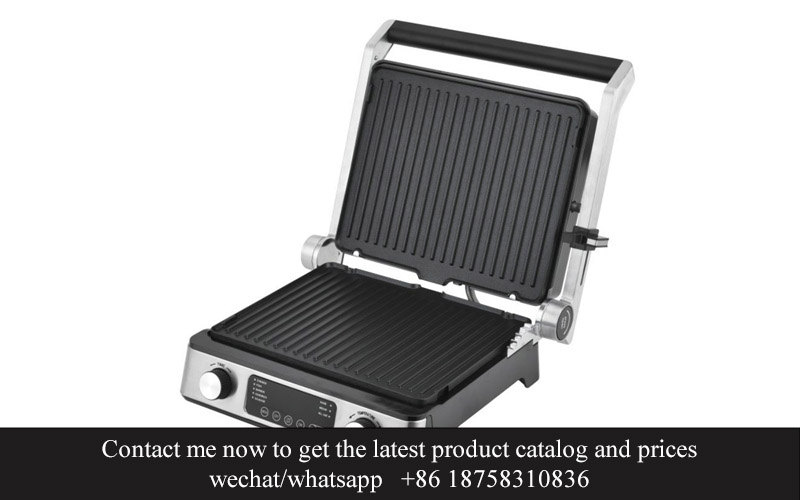
Air fryers have become a staple in many kitchens, offering a healthier alternative to traditional frying methods. But why stop at the appliance itself? The true potential lies in the accessories that can elevate the air frying experience. Here are some innovative ideas for air fryer accessories that could revolutionize the way we cook:
Smart Temperature Control Scales: Imagine a set of scales that not only measure the weight of your ingredients but also suggest the perfect cooking temperature for each item. With this innovative accessory, you could ensure that your vegetables are perfectly crispy on the outside and tender on the inside, while meats reach their ideal doneness without overcooking.
Collapsible Baskets and Trays: Space is often a premium in modern kitchens. A collapsible basket or tray for your air fryer could be a game-changer. This accessory would allow you to maximize storage by flattening the basket when not in use, while still being sturdy and durable enough to support the weight of your food during cooking.
Multi-Function Attachments: Why settle for just one task when you can do more? Think of attachments that can turn your air fryer into a multi-functional appliance. For instance, a rotisserie attachment for cooking whole birds or a pizza oven attachment that allows you to bake pizzas to perfection with the crispiness of a traditional oven.
Aromatherapy Inserts: Enhancing the flavor of your air-fried dishes is key. An aromatherapy insert could be a small pod or compartment where you can add essential oils or herbs. This would infuse your food with additional aroma and flavor as it cooks, creating a more aromatic and appealing dish.
Self-Cleaning Filters: Air fryers are already a healthier choice due to their reduced oil usage, but why not take it a step further? A self-cleaning filter could be designed to trap grease and food particles, reducing the need for manual cleaning and extending the life of your air fryer.
Egg Cooker Inserts: Eggs are a versatile ingredient that can be cooked in countless ways. An egg cooker insert designed specifically for air fryers would allow users to fry, poach, or even bake eggs with ease, making it a must-have for breakfast enthusiasts.
Bread Crumbing Station: Achieving a crispy crust on your air-fried chicken or fish can be a challenge. A bread crumbing station attachment would include a compartment for breadcrumbs and a system to evenly coat your food with a light sprinkle, ensuring a perfect golden crust every time.
Veggie Chopper and Slicer: For those who prefer their vegetables prepped and ready to go, a built-in veggie chopper and slicer could be a game-changer. This accessory would allow you to chop or slice your vegetables directly in the air fryer basket, saving time and effort.
Flavor Infusion Balls: Similar to the aromatherapy inserts, flavor infusion balls could be used to infuse your cooking with a variety of flavors. These balls could be filled with spices, herbs, or even fruit purees, which would infuse the food as it cooks, adding depth and complexity to the taste.
Non-Stick Coated Liners: For those who prefer not to use additional cooking sprays or oils, non-stick coated liners could be a game-changer. These reusable liners would reduce sticking and make cleanup a breeze, while also being safe for high-heat cooking.
Drip Tray and Catch Basin: To keep your countertop clean, a drip tray and catch basin could be designed to catch any excess oil or food particles that fall during the cooking process. This would make cleanup after cooking a simple task of disposing of the contents of the tray and basin.
Recipe Guide and App Integration: Lastly, an accessory that offers a recipe guide or integrates with a mobile app could be a valuable tool. This would provide users with a library of recipes tailored to their air fryer, making it easier to experiment with new dishes and ingredients.
These innovative ideas for air fryer accessories are designed to make cooking more convenient, efficient, and enjoyable. By enhancing the functionality of the appliance and expanding its capabilities, these accessories could help take the air fryer from a single-purpose kitchen gadget to a versatile tool that can cater to a wide range of culinary needs.
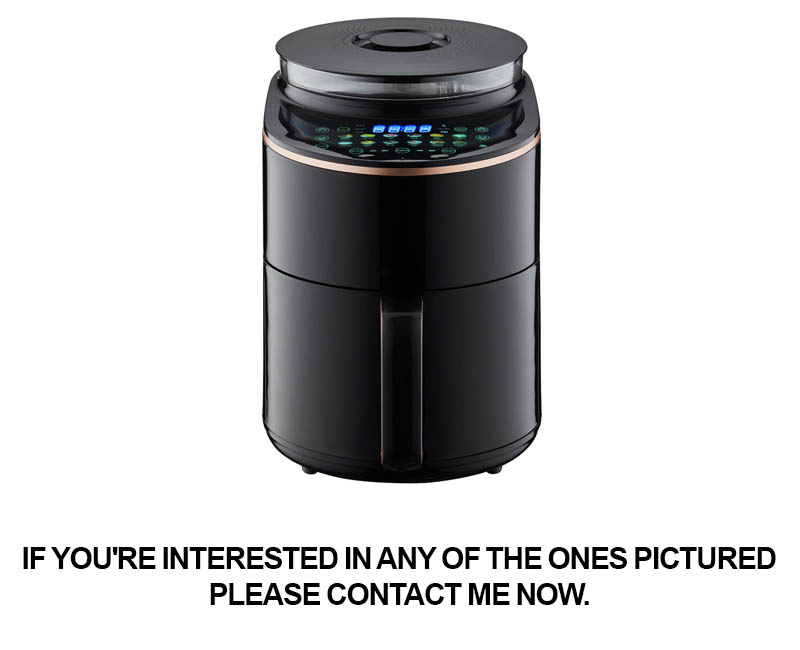
In the dynamic world of kitchen appliance industry, market sensitivity plays a pivotal role in shaping success. Understanding the nuances of consumer preferences, emerging trends, and technological advancements is not just a competitive edge—it’s a necessity for survival. Here’s why market sensitivity is so crucial:
Consumer Behavior Shifts: Consumer tastes and preferences are constantly evolving. A few years ago, the term “healthy cooking” might have been associated with bland, tasteless dishes. Today, it’s all about achieving that perfect balance between health and flavor. Market-sensitive appliance manufacturers stay attuned to these shifts, designing products that cater to the demand for healthier, yet delicious food options.
Globalization’s Impact: The world is becoming more interconnected, and this has a direct effect on the kitchen appliance market. As cultures blend and travel becomes more accessible, consumers are exposed to a wider array of cooking techniques and ingredients. This exposure influences their appliance preferences, leading to a demand for versatile, multi-functional appliances that can handle a variety of culinary styles.
Technological Integration: Technology is no longer confined to smartphones and computers; it’s now a staple in kitchen appliances. Smart ovens, induction cooktops, and Bluetooth-enabled mixers are just a few examples of how technology has transformed the kitchen. Being market-sensitive means embracing these technological advancements and incorporating them into product design to enhance user experience and convenience.
Sustainability and Eco-Friendly Trends: There’s a growing awareness of environmental issues, and this extends to the kitchen. Consumers are increasingly looking for appliances that are energy-efficient, have a longer lifespan, and are made from sustainable materials. Market-sensitive companies not only design eco-friendly appliances but also ensure their production processes are green.
Health and Safety Concerns: Safety is paramount in any product, and kitchen appliances are no exception. Market sensitivity involves staying informed about health and safety regulations and standards. It also means anticipating potential risks and designing products that not only meet safety standards but also offer peace of mind to consumers.
Competitive Landscape Analysis: The kitchen appliance industry is fiercely competitive. Being market-sensitive means constantly analyzing the competitive landscape to identify gaps in the market, unique selling propositions, and areas where innovation can set your brand apart. This involves keeping an eye on what competitors are offering and how they are positioning their products.
E-commerce and Online Shopping: The rise of e-commerce has changed the way consumers shop for kitchen appliances. Market-sensitive companies understand the importance of an online presence and tailor their marketing strategies to appeal to digital-savvy consumers. This includes optimizing product descriptions, leveraging social media, and providing seamless online shopping experiences.
Cultural Nuances: Different regions have unique cultural preferences that influence appliance choices. For instance, in some countries, a pressure cooker might be a staple, while in others, it’s a novelty. Being market-sensitive requires recognizing these cultural nuances and adapting product offerings accordingly.
Customer Feedback and Reviews: Consumers today are more vocal than ever, and their feedback is invaluable. Market-sensitive companies actively seek out customer reviews and use this information to improve their products and services. This feedback loop ensures that products are continuously refined to meet customer expectations.
Pricing Strategy: Understanding market dynamics also means having a keen eye on pricing. Consumers are price-sensitive, and market-sensitive companies must balance affordability with quality to remain competitive.
In conclusion, market sensitivity in the kitchen appliance industry is about staying connected to the consumer. It’s about anticipating needs, embracing innovation, and responding to the ever-changing landscape of consumer preferences and technological advancements. By doing so, companies can not only keep up with the competition but also lead the way in shaping the future of kitchen appliances.

In today’s rapidly evolving kitchen appliance industry, staying ahead of the curve is paramount. To do so, leveraging industry trends and data analysis has become an indispensable tool for businesses aiming to innovate and succeed. Here’s how these elements come together to drive the market forward.
Understanding Consumer Needs Through DataData analysis offers a deep dive into consumer preferences, habits, and behaviors. By analyzing sales data, market research reports, and consumer feedback, companies can uncover insights that guide the development of new products. For instance, if data shows a growing trend towards healthier cooking methods, manufacturers can focus on air fryers and accessories that cater to this demand, such as those that reduce oil usage or provide nutritional information.
Identifying Emerging Trends Early OnIndustry trends are like ripples in a pond, starting small but expanding rapidly. By keeping a close eye on these trends, companies can anticipate shifts in the market and adjust their strategies accordingly. For example, the rise of smart home technology has sparked a demand for kitchen appliances that can be controlled remotely. A company that recognizes this trend and integrates smart features into their air fryer accessories can position themselves as a leader in the market.
The Role of Social Media and Online PlatformsSocial media and online platforms are treasure troves of real-time data. By monitoring hashtags, customer reviews, and influencer endorsements, brands can gauge public interest in new and existing products. This kind of qualitative data complements the quantitative data from market research, providing a more holistic view of the market landscape. For instance, a surge in posts featuring air fryer recipes and hacks can signal a surge in popularity for air fryers and the need for accompanying accessories.
The Impact of Competition on InnovationCompetition drives innovation, and in the kitchen appliance industry, it’s fierce. Companies must analyze their competitors’ offerings to identify gaps in the market. By understanding what competitors are missing, businesses can design accessories that fill these needs. This might involve creating a unique air fryer basket that allows for larger portions or a special coating that enhances flavor and durability.
Collaboration with Experts and Trends ForecastersIndustry experts and trend forecasters play a crucial role in shaping the future of kitchen appliances. By collaborating with these individuals, companies can gain access to forward-thinking insights that might not be apparent through traditional data analysis alone. For example, a food scientist might predict the next big cooking technique that could influence accessory design, such as sous-vide or vacuum sealing.
Globalization and the Impact of Cultural DifferencesThe kitchen appliance industry is not confined to one region; it’s a global market. Understanding cultural differences and adapting products to meet diverse needs is key. Data analysis can reveal which features are most valued in different markets, from energy efficiency to cooking capabilities. For instance, accessories that cater to Indian or Asian cooking styles might be in high demand in certain regions due to cultural preferences.
The Evolution of Smart TechnologyThe integration of smart technology into kitchen appliances is a trend that’s not going away. By analyzing consumer behavior and preferences, companies can develop smart accessories that enhance the user experience. This could mean integrating Wi-Fi connectivity, voice control, or even augmented reality to guide users through recipes or maintenance tips.
Adapting to Environmental ConcernsConsumers are increasingly concerned about the environmental impact of their purchases. Data analysis can show how much consumers are willing to pay for sustainable, eco-friendly products. This knowledge can be used to design accessories that are not only functional but also environmentally responsible, such as biodegradable parts or energy-saving features.
Predictive Analytics and Future PlanningPredictive analytics takes data analysis a step further by forecasting future market conditions. By using historical data and current trends, companies can make informed decisions about future product lines, marketing strategies, and investment opportunities. This forward-looking approach ensures that businesses remain competitive and ready to adapt to whatever the market may bring.
In conclusion, the intersection of industry trends and data analysis is where the magic happens in the kitchen appliance industry. By harnessing this power, companies can create innovative products that resonate with consumers, stay ahead of the competition, and lead the market into new and exciting territories.
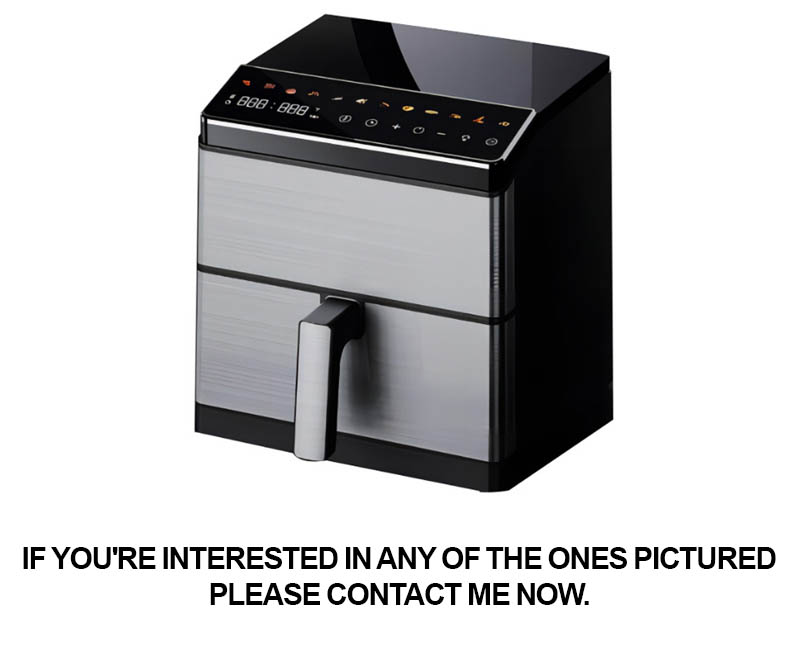
In today’s fast-paced world, convenience is king, and the kitchen appliance industry is no exception. The rise of custom air fryer accessory design services is a testament to the growing demand for personalized convenience. Here’s how this concept is reshaping the kitchen appliance landscape.
The ability to tailor accessories to individual needs is a game-changer for consumers. Whether it’s a matter of personal preference or specific dietary requirements, custom designs offer a level of flexibility that off-the-shelf products simply can’t match. From ergonomic handles to unique filter systems, the possibilities for customization are vast.
One key aspect of custom air fryer accessory design services is the focus on user experience. By understanding the nuances of how people interact with their appliances, designers can create accessories that not only enhance functionality but also make the cooking process more enjoyable. Think of a smart, programmable timer that syncs with your phone, or a built-in recipe book that suggests meals based on the ingredients you have on hand.
In the realm of sustainability, custom accessories play a pivotal role. As consumers become more environmentally conscious, the demand for accessories made from sustainable materials is on the rise. Custom design services can cater to this trend by offering accessories that are not only eco-friendly but also durable and long-lasting.
The integration of technology is another area where custom air fryer accessories shine. From Bluetooth-enabled temperature controls to accessories that can be remotely monitored via a smartphone app, the possibilities for innovation are endless. This not only adds convenience but also ensures that users can maintain perfect cooking conditions regardless of their location.
Safety is a paramount concern in kitchen appliances, and custom accessories can address this with precision. For instance, accessories like non-slip bases or temperature-resistant handles can prevent accidents and make the cooking experience safer for all. Customization also allows for the inclusion of safety features that may not be standard in mass-produced items.
Another advantage of custom air fryer accessory design services is the potential for brand differentiation. Manufacturers can offer unique features that set their products apart from the competition, appealing to a niche market or a broader audience. This can lead to increased brand loyalty and customer retention.
Customization also allows for the creation of accessories that cater to specific dietary trends. For example, with the rise of veganism and gluten-free diets, there’s a demand for accessories that can accommodate these needs without compromising on quality or performance. Custom design services can create accessories that are not only practical but also align with these dietary preferences.
The process of designing custom air fryer accessories involves close collaboration between the designer and the end-user. This ensures that the final product is not only functional but also aesthetically pleasing. The ability to see a prototype before production begins means that any adjustments can be made to ensure the accessory meets the user’s expectations.
From a business perspective, custom air fryer accessory design services can open up new revenue streams. By offering add-ons that can be sold separately, manufacturers can create additional profit centers. This can be particularly beneficial in a market where consumers are looking for ways to extend the life and functionality of their appliances.
In conclusion, the concept of custom air fryer accessory design services is a powerful tool for the kitchen appliance industry. It meets the needs of today’s consumers who value convenience, sustainability, and personalization. As the industry continues to evolve, these services are likely to become even more integral to the success of kitchen appliance manufacturers.
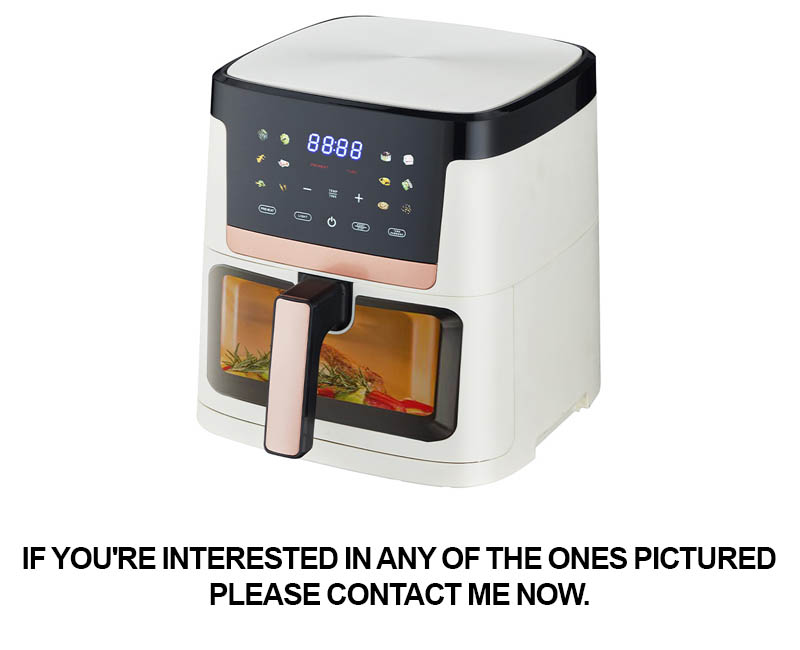
In today’s fast-paced world, consumer expectations are evolving rapidly. Companies that can tap into this demand for personalization and cater to individual preferences stand out in a crowded market. Customization isn’t just a trend; it’s a powerful tool that can significantly boost consumer engagement. Let’s delve into how this approach can enhance customer loyalty, satisfaction, and brand advocacy.
Personalization Creates a Unique ExperienceWhen customers feel that a product or service is tailored specifically to their needs, it fosters a sense of exclusivity. Customization allows consumers to express their identity through their purchases, whether it’s a personalized phone case, a monogrammed outfit, or a custom air fryer accessory. This unique experience can create a lasting impression and deepen the customer’s connection with the brand.
Engagement Through InteractionCustomization often involves a level of interaction with the brand, whether it’s through selecting colors, materials, or features. This engagement can be incredibly engaging for consumers, as it allows them to feel like they are part of the creative process. Interactive online tools, such as virtual customization platforms, can keep customers involved and excited about their purchase long before they even receive it.
Building Trust and CredibilityWhen a company offers customization options, it signals that they are willing to listen to their customers and adapt to their needs. This builds trust and credibility, as consumers perceive the brand as responsive and customer-centric. Brands that take customization seriously are more likely to be recommended by satisfied customers and gain a reputation for quality and innovation.
Enhancing Customer LoyaltyLoyal customers are the backbone of any business, and customization can play a pivotal role in fostering loyalty. When customers feel their preferences are valued and that they have a say in the products they use, they are more likely to develop a sense of loyalty. This loyalty can translate into repeat purchases, longer-term relationships, and a willingness to pay premium prices for the brand’s offerings.
Tailoring to Different Consumer SegmentsThe beauty of customization is that it can cater to a wide range of consumer segments. From tech-savvy millennials looking for the latest features to environmentally conscious consumers seeking sustainable options, customization allows brands to address the diverse needs and values of their customer base. By offering a variety of customization choices, companies can attract and retain a broader audience.
Encouraging Social SharingCustomized products often become a point of pride for consumers, leading to social sharing and word-of-mouth marketing. When customers showcase their unique creations on social media, it not only promotes the brand but also reinforces the positive image of the product. This viral effect can significantly increase brand visibility and attract new customers.
Collecting Valuable Customer DataCustomization also offers a valuable opportunity for brands to collect detailed customer data. By understanding what features and options are most popular, companies can gain insights into consumer preferences and trends. This data can inform future product development and help companies stay ahead of the competition.
Creating a Competitive AdvantageIn a market where products can often seem homogenous, customization can provide a significant competitive edge. Brands that offer unique, customizable solutions are more likely to stand out and capture the attention of consumers who are tired of the one-size-fits-all approach. This differentiation can lead to higher customer acquisition rates and a stronger market position.
Closing the Loop with Customer FeedbackThe final piece of the customization puzzle is the ability to gather and act on customer feedback. By encouraging customers to provide feedback on their customized products, brands can continue to refine and improve their offerings. This ongoing dialogue helps to ensure that the customization experience remains fresh and relevant, keeping customers engaged and satisfied.
In conclusion, customization is not just about offering a personal touch; it’s about creating a deeper, more meaningful relationship with customers. By leveraging the power of personalization, companies can enhance engagement, build loyalty, and ultimately drive business growth.
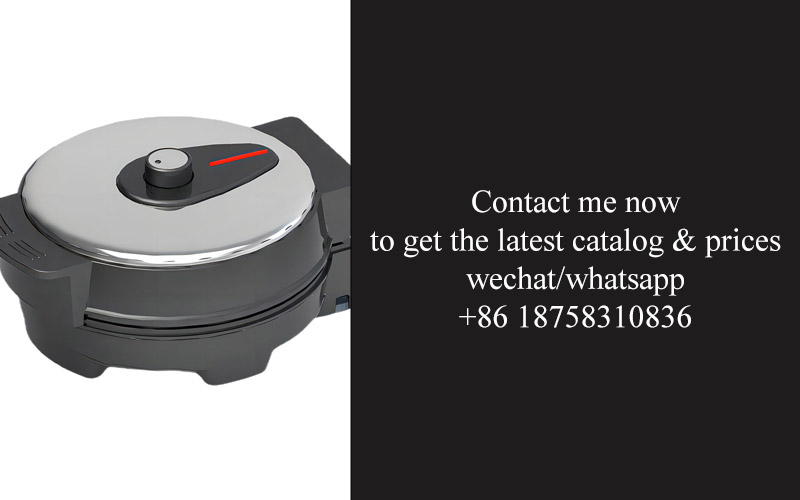
Understanding the intricacies of consumer needs and market trends, designing and implementing custom air fryer accessories requires a meticulous process that combines creativity with practicality. Here’s a deep dive into the steps involved:
The research phase is pivotal, involving comprehensive market analysis to identify gaps and opportunities. This includes studying consumer behavior, preferences, and the current landscape of air fryer accessories. Insights gained from this phase help in shaping the design direction.
Collaboration with chefs and culinary experts provides invaluable input on the usability and functionality of the accessories. These professionals can offer insights into the types of food items commonly cooked in air fryers and suggest features that could enhance cooking experiences.
The brainstorming session is where creativity takes the lead. Designers and engineers come together to generate ideas that are not only innovative but also feasible. This stage involves sketching out concepts, experimenting with materials, and considering the ergonomic aspects of the accessories.
Prototyping is a crucial step in the process. It allows for the creation of a physical model of the accessory, which can be tested and refined. This phase often involves multiple iterations, with each prototype bringing the design closer to its final form. The prototypes are tested for durability, ease of use, and compatibility with various air fryer models.
Feedback from initial users is gathered during the testing phase. This user feedback is critical in fine-tuning the design to ensure it meets the needs and expectations of the target market. The process may involve making adjustments to the size, shape, materials, or functionality of the accessory based on user insights.
The manufacturing stage is where the custom air fryer accessories are brought to life. High-quality materials are selected to ensure the accessories are durable and safe to use. Advanced manufacturing techniques are employed to produce the accessories in a way that maintains consistency and quality across all units.
Packaging design is another important aspect of the process. The packaging must not only protect the accessories during transportation but also effectively communicate the product’s features and benefits to the consumer. This is where marketing and design teams collaborate to create packaging that is both functional and visually appealing.
Quality control checks are performed at various stages of the production process to ensure that the final product meets the highest standards. This includes inspecting the accessories for any manufacturing defects, verifying that they meet safety regulations, and ensuring that they are compatible with different air fryer models.
The final step is the distribution of the custom air fryer accessories to the market. This involves logistics planning to ensure efficient and timely delivery to retailers and directly to consumers. The marketing strategy is also rolled out during this phase to create awareness and generate interest in the new products.
In conclusion, the process of designing and implementing custom air fryer accessories is a multi-faceted journey that requires a blend of technical expertise, creative thinking, and a deep understanding of the consumer market. From initial concept to final product, each step is carefully executed to deliver a product that not only enhances the air frying experience but also stands out in a competitive marketplace.
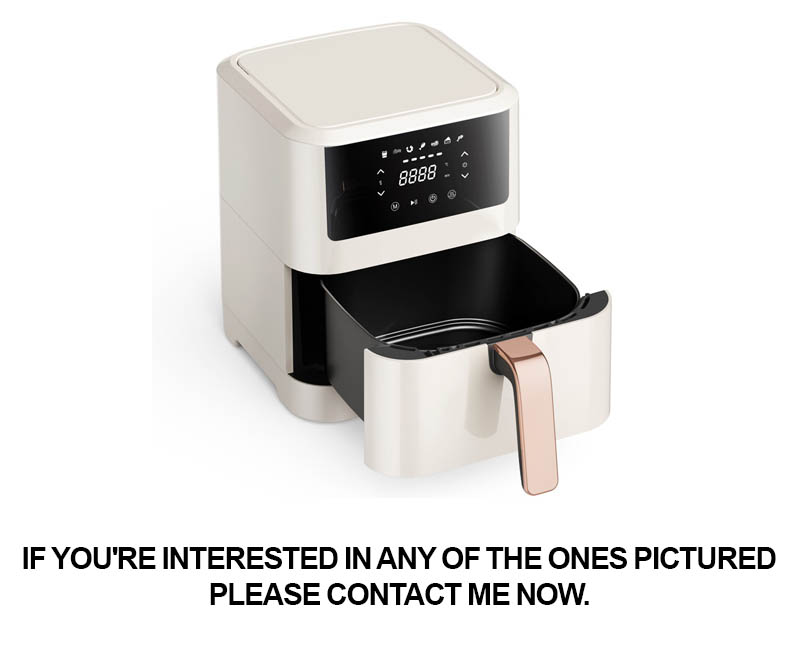
In the world of kitchen appliances, custom air fryer accessory designs have become a game-changer, offering users a unique blend of personalization and convenience. Let’s delve into some case studies that showcase the success of these innovative designs.
The first case study involves a company that designed a set of interchangeable air fryer baskets. These baskets were crafted to cater to various cooking needs, from shallow dishes for delicate vegetables to deep containers for hearty meats. The result was a product that allowed users to tailor their cooking experience to the specific food they were preparing.
The interchangeable baskets were a hit with consumers who appreciated the versatility they offered. Users could easily switch between different basket sizes without the need for additional accessories or tools. This design not only simplified the cooking process but also reduced the clutter in their kitchen cabinets.
Another successful case study comes from a brand that developed a smart air fryer accessory with integrated temperature control. This accessory was designed to work with the brand’s smart appliances, allowing users to monitor and adjust the cooking temperature remotely via their smartphones. The accessory was a hit among tech-savvy consumers who sought to merge the latest technology with their cooking habits.
The smart accessory’s success was attributed to its seamless integration with existing appliances and its user-friendly interface. Users could enjoy the benefits of precise temperature control, ensuring that their food was cooked to perfection every time. The case study highlighted the importance of keeping up with technological advancements and incorporating them into kitchen appliance designs.
A third case study involves a company that introduced a line of eco-friendly air fryer accessories made from sustainable materials. These accessories were not only designed to enhance the cooking experience but also to promote environmental consciousness among consumers.
The sustainable accessories were well-received by eco-conscious buyers who were looking for ways to reduce their carbon footprint in the kitchen. The design focused on durability and ease of cleaning, ensuring that the accessories would last long and require minimal maintenance. This case study demonstrated how a commitment to sustainability can drive consumer engagement and loyalty.
In another instance, a brand created a line of air fryer accessories that were specifically designed for health-conscious individuals. The accessories included non-stick coatings that were free from harmful chemicals, making them a safer option for those with sensitivities or allergies.
The health-focused accessories became a popular choice among consumers who were looking for ways to enjoy their favorite foods without compromising their health. The case study underscored the importance of addressing specific consumer needs and tailoring products to cater to them.
A final case study involves a company that designed a compact air fryer accessory with foldable legs. This design allowed users to save space by collapsing the legs when the appliance was not in use. The accessory was particularly appealing to those with limited kitchen space or those who frequently traveled and needed a portable cooking solution.
The foldable leg accessory was praised for its practicality and convenience. It allowed users to easily store the air fryer when not in use and transport it with ease. This case study highlighted the value of innovative designs that solve real-life problems for consumers.
These case studies collectively demonstrate the power of custom air fryer accessory design services in engaging consumers. By focusing on user needs, incorporating technological advancements, and addressing broader concerns such as sustainability and health, these companies have created products that resonate with their target audiences. The success of these custom designs serves as an inspiration for the entire kitchen appliance industry, showing that innovation and consumer engagement go hand in hand.

In the ever-evolving landscape of kitchen appliances, air fryers have emerged as a favorite among health-conscious and time-strapped consumers. These versatile devices have revolutionized the way we cook, offering a healthier alternative to traditional frying methods. As the market for air fryers grows, so does the demand for innovative accessories that enhance the cooking experience. Let’s take a look into the future of kitchen appliances by exploring the next generation of air fryer accessories.
The integration of smart technology is a key trend that is reshaping the air fryer accessory market. Imagine an air fryer that not only cooks your food but also connects to your smartphone, allowing you to monitor and control your cooking process remotely. Accessories like smart sensors that track temperature and time, or even voice-activated controls, are becoming increasingly popular.
One of the most anticipated advancements is the development of air fryer accessories that cater to specific dietary needs. For example, accessories that can accommodate gluten-free, vegan, or paleo diets are becoming more common. These specialized accessories ensure that every user can enjoy the benefits of air frying without compromising on their dietary preferences.
Sustainability is another crucial factor driving the innovation in air fryer accessories. Manufacturers are focusing on creating eco-friendly accessories made from recycled materials or biodegradable options. This not only reduces the environmental impact but also appeals to consumers who are increasingly conscious of their carbon footprint.
Customization has always been a sought-after feature in the kitchen appliance industry, and the next generation of air fryer accessories is no exception. Users are looking for accessories that not only enhance the functionality of their appliances but also reflect their personal style. From unique color options to personalized branding, custom air fryer accessories are making a statement in the kitchen.
The convenience factor cannot be overlooked when discussing the future of air fryer accessories. Accessories that simplify the cooking process, such as self-cleaning features or built-in timers, are becoming more sophisticated. For instance, accessories that automatically adjust the cooking temperature and time based on the type of food being prepared are not just convenient but also reduce the risk of overcooking or undercooking.
Safety is a paramount concern in kitchen appliances, and the next generation of air fryer accessories is addressing this with new innovations. Accessories like childproof locks, non-slip bases, and temperature-control systems that prevent overheating are becoming standard features. These safety enhancements not only protect users but also provide peace of mind.
As we delve deeper into the future, we see a world where air fryers are not just cooking devices but part of a connected kitchen ecosystem. Accessories that integrate with other smart appliances, such as ovens, refrigerators, and dishwashers, are on the horizon. This interconnectedness will allow for seamless meal preparation and management, making cooking a more enjoyable and efficient experience.
In the realm of air fryer accessories, we’re witnessing a surge in creative solutions that cater to the evolving needs of consumers. For instance, accessories that allow for multi-level cooking are becoming popular, enabling users to prepare multiple dishes simultaneously. This is particularly beneficial for families or those hosting gatherings.
Moreover, the rise of subscription services for air fryer accessories is a testament to the market’s demand for convenience and innovation. These services offer a monthly selection of accessories tailored to the user’s preferences and cooking habits, ensuring that they always have the latest and greatest tools at their disposal.
The future of air fryer accessories is also about embracing the global kitchen. As cultures blend and culinary traditions merge, we’re seeing accessories that cater to international flavors and cooking techniques. Whether it’s a specialized basket for Indian biryanis or a unique lid for Korean bulgogi, these accessories are making it easier for consumers to explore the world’s cuisine from the comfort of their own home.
In conclusion, the next generation of air fryer accessories is poised to transform the way we cook. With a focus on smart technology, customization, sustainability, convenience, safety, and global culinary exploration, these accessories are not just enhancing the air fryer experience but also setting the stage for a new era of kitchen appliances. As we look ahead, it’s clear that the future of cooking will be as diverse and innovative as the dishes we create.